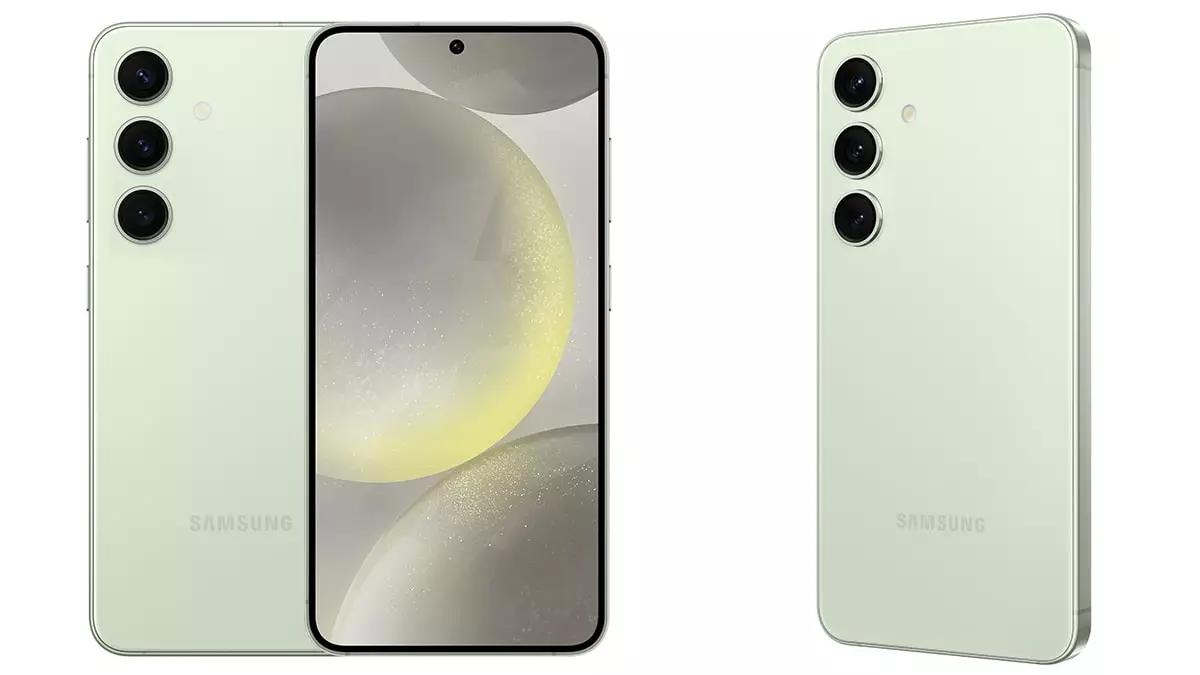In an increasingly competitive smartphone market, both Apple and Samsung seem poised to introduce design innovations that prioritize portability and style. According to recent insights, Apple may be preparing to launch a new model in its iPhone lineup known as the iPhone 17 Slim—or potentially iPhone 17 Air—next year. This development suggests a strategic shift towards slimmer profiles that consumers have come to crave. Parallel to this, Samsung is reportedly contemplating the release of the Galaxy S25 Slim, further underscoring the industry’s growing emphasis on sleek design elements.
The question remains whether Apple will retain its Plus model or replace it with the new slim variant, as the tech giant aims to refine its offerings. Originating from a South Korean news outlet, the buzz surrounding Samsung’s slim model indicates an industry-wide shift that challenges traditional dimensions of smartphones. Presently, the Galaxy S series has consistently included standard, Plus, and Ultra models; however, the upcoming Galaxy S25 Slim introduces an exciting possibility of a more lightweight, streamlined option.
The concept of a slim variant carries significant implications for feature integration. Reports suggest that the Galaxy S25 Slim could follow its Galaxy S25 counterparts, which are expected to roll out in early 2025. Should this model come to fruition, it could embody a design philosophy that merges aesthetic appeal with enhanced functionality. Notably, a limited release strategy for the Galaxy S25 Slim indicates a cautious approach to gauging consumer feedback. If initial reception aligns with market expectations, Samsung may reevaluate its long-term strategy for the Galaxy S26 series, highlighting the importance of responsiveness to consumer desires.
Similarly, Apple’s introduction of the iPhone 17 Slim later in 2025 would position it to compete directly with Samsung’s slim offering. Both manufacturers appear to lean towards utilizing advanced technologies, such as high-performance chipsets and cutting-edge display materials, including LTPO OLED panels. Expectations also hint at unique color offerings across models, which would aim to captivate aesthetic-focused consumers.
As the tech landscape continuously evolves, this potential rivalry between Apple and Samsung could consequentially reshape consumer preferences. Apple’s move to a thinner form factor reflects a larger trend where users prioritize both style and usability. The fact that these two giant competitors are racing towards similar end goals—creating slimmer devices—highlights a significant turning point within the industry. Moreover, the successful launch of these models could redefine what consumers should expect from high-end smartphones.
The slim smartphone trend heralds an exciting chapter in mobile technology, suggesting that both Apple and Samsung are listening closely to consumer needs. This focus on delivering sleek, lightweight devices could potentially fuel future innovation, ultimately influencing the market dynamics in the smartphone arena for years to come. As both companies set their sights on 2025, there is no doubt that excitement is building around the future of mobile computing.

Leave a Reply